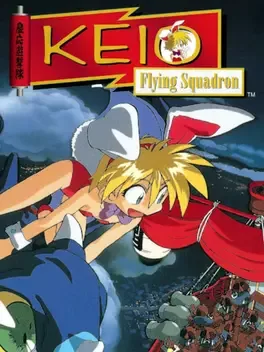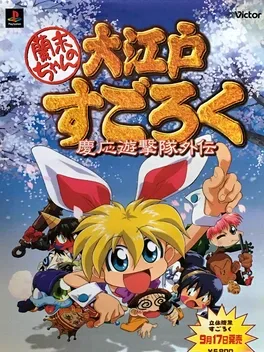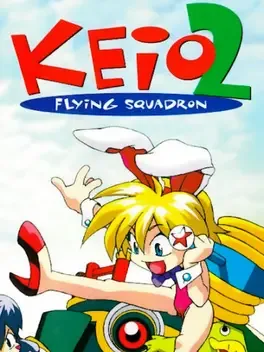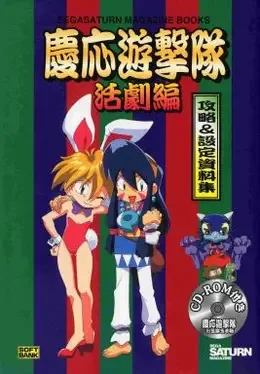Popular games for collection Keio Flying Squadron

Keio Flying Squadron (慶応遊撃隊 Keiōyūgekitai?) is a scrolling shooter video game developed and published by Victor Entertainment in 1994 for the Sega/Mega CD in Japan, Europe, and North America. It is the first game of the Keio Flying Squadron series with a simple shoot-'em-up style of play. Gameplay The game consists of the protagonist Rami riding on top of Spot, who can shoot fireballs at enemies. When Spot is not firing, two smaller dragons (Companion fighters) appear one after another to assist Rami and Spot. The lesser dragons shoot smaller fireballs and can be sacrificed to do larger damage, only to reappear when Spot ceases to shoot. Release In Europe, a demo of the first level of this game was provided by Sega Pro magazine. The game seemed to end after the first level, but in fact the whole game was accessible on the disc by using a level-select cheat to skip to the second level, and then continuing through the game. Reception Retro Gamer included among top ten Mega CD games, calling it "a perfectly acceptable substitute" OF Konami's Parodius that features "similar style of horizontally scrolling wackiness and puts the Mega-CD hardware to good use to produce some excellent cut-scenes and a brilliant CD-quality soundtrack."

Rami-chan no Ooedo Sugoroku: Keio Yuugekitai Gaiden is a 1998 video game for the PlayStation. Developed by Victor Interactive Software, it is the third and last game in the Keio Flying Squadron series, and was released only in Japan. While the first game is a side-scrolling shoot 'em up and its sequel, Keio Flying Squadron 2, is a platformer with shooter sections, the third game is a party game. Like the first two games, the third game refers to Japanese culture, both ancient and modern simultaneously.

Keio Flying Squadron 2 was released in 1996 for the Sega Saturn in Japan, Europe, and Australia. The second installment of the series continues the story of Rami's adventures as the Keeper of the Secret Treasure (a sphere passed down through generations of Rami's family). Rami races Dr. Pon and a new rival Himiko Yamatai for an ancient treasure that can be unlocked with six spheres. Two of the stages retain the shoot-'em-up style of the first game, but the lesser dragons can be obtained as bonuses only. Mainly the stages consist of sidescroling platformer stages. These scroll from right to left on the Japanese version and left to right on all other versions. Several bonuses can be collected including three weapons (Rami can also bounce on the heads of enemies to defeat them): A large mallet, used only for hitting enemies An umbrella, used to hit enemies, float and deflect overhead obstacles A bow, used to shoot arrows at enemies. Besides the platformer and shoot-'em-up stages, there is vertically scrolling special stages, an underwater stage and a rollercoaster stage, making the game a multi-genre platformer. Points spheres can be collected throughout the game. A reward system accessed from the main menu unlocked helpful hints and behind-the-scenes extras depending on the highest and lowest scores achieved through playing.

A "Not For Resale" demo disc of Keio Flying Squadron 2 which includes high quality videos from the first Keio, demo levels, and an art gallery.